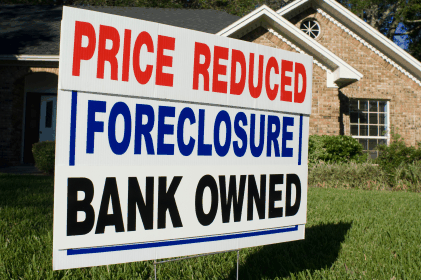
Over the past week, the two main US house price data providers – Case-Shiller and the FHFA – released their second quarter indices. And once again, they provide a sobering insight into the carnage caused when housing bubbles burst violently.
The national series are shown below, both in nominal and real terms. According to the data, US home values have now fallen back to their early 2000 levels.
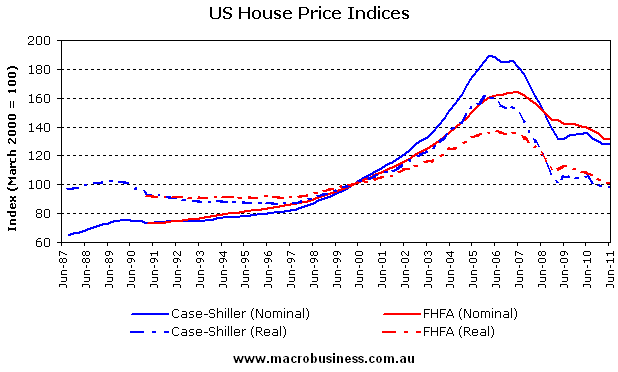
Following the bursting of the US housing bubble, unemployment has skyrocketed, with the official (U3) rate having risen from under 5% just before the crash to around 9% currently (with the broader U6 measure of unemployment nearly double this level).
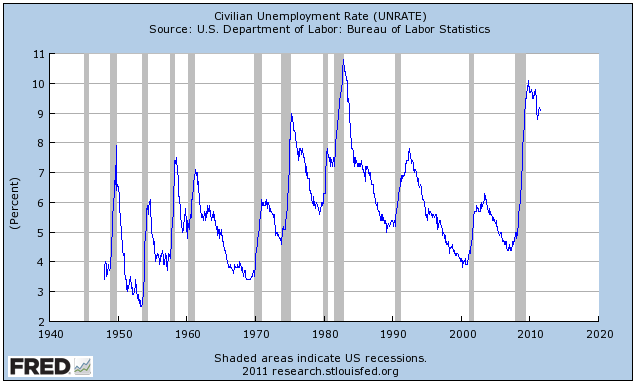
There are now 14 million people officially unemployed in the US, with many more unofficially out of work:
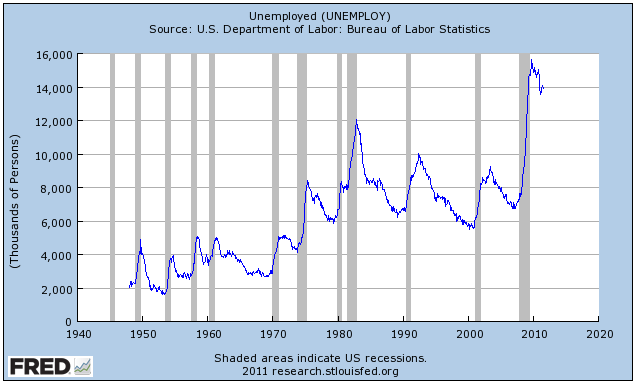
Mortgage delinquencies have also exploded, increasing from around 1.5% before the bust to around 9% currently:
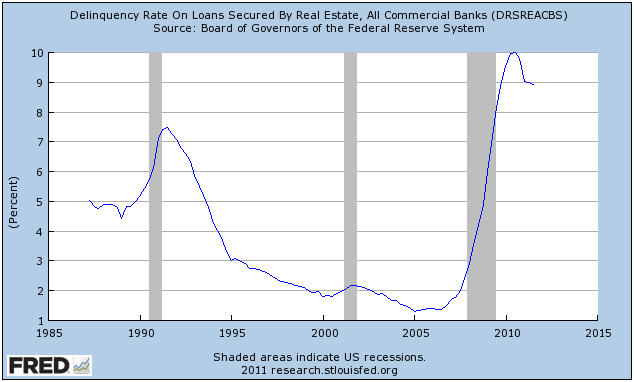
Meanwhile, household net worth has plummeted, caused mostly by huge losses in home equity (charts from Calculated Risk):
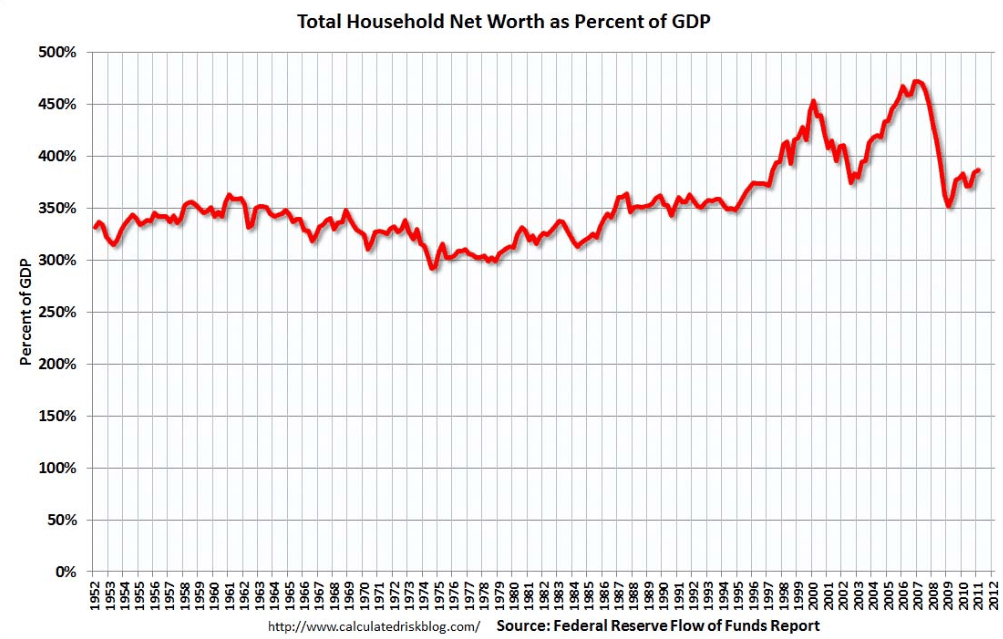
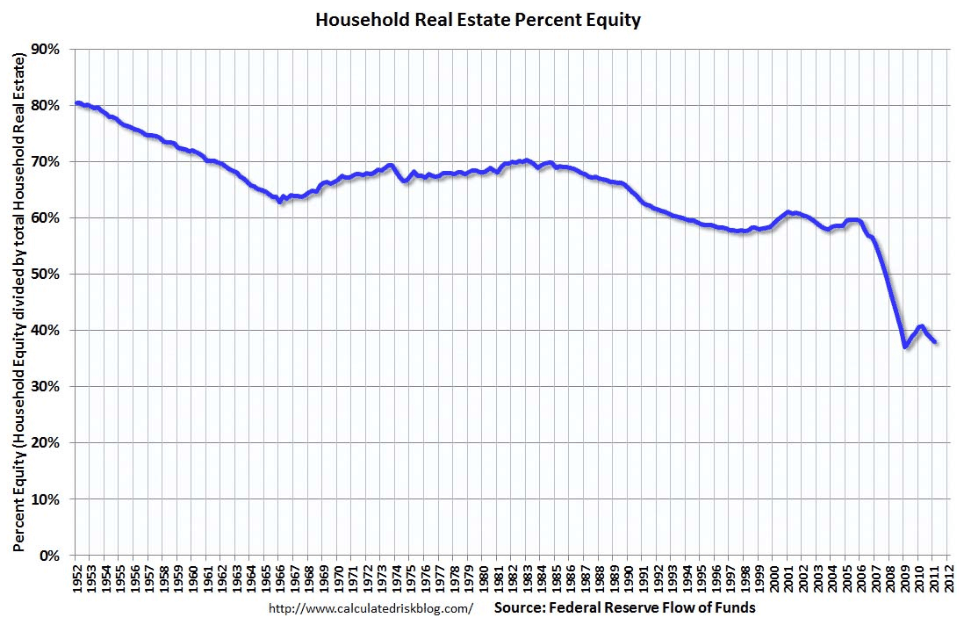
The housing pain has not been shared evenly, however, with those markets with stronger regulatory barriers to land/housing supply (‘urban containment’ policies) experiencing far higher price volatility and more pronounced boom/bust cycles (and losses in home equity) than those markets operating less restrictive regulatory regimes.
First, consider the below charts showing prices in those markets where more prescriptive land-use regulations are in place, and the market was hindered in its ability to supply new homes quickly and cheaply in response to changes in demand:
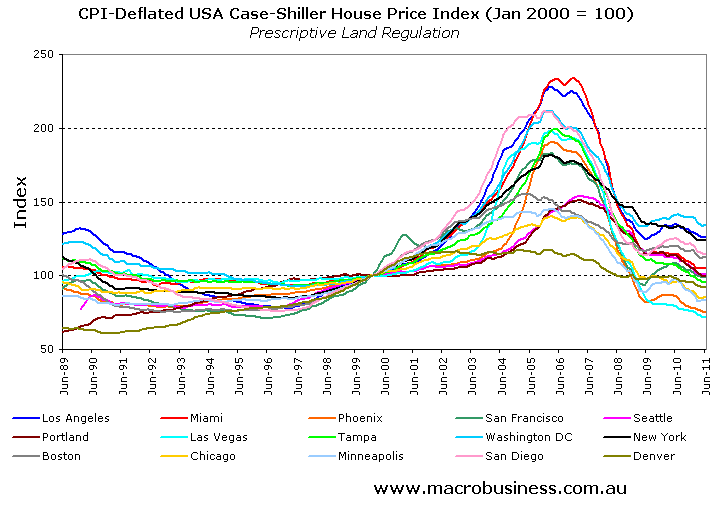
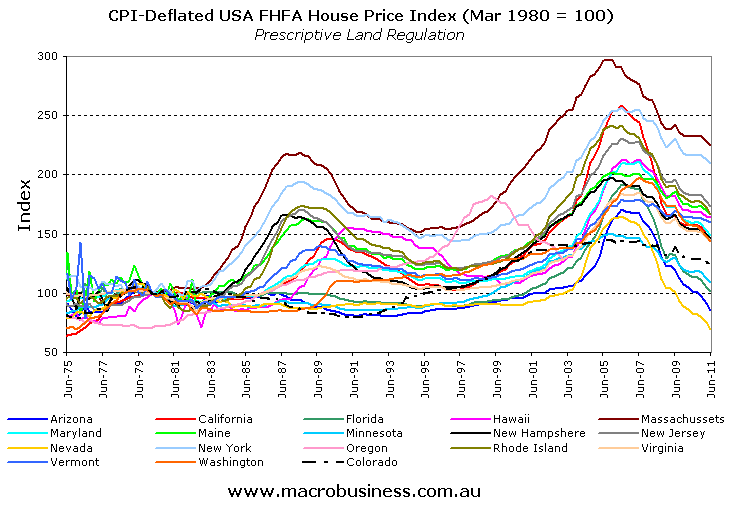
By contrast, consider those markets operating less restrictive land-use regimes, where land/housing supply is more market orientated and supply is more easily able to respond both quickly and efficiently to changes in demand:
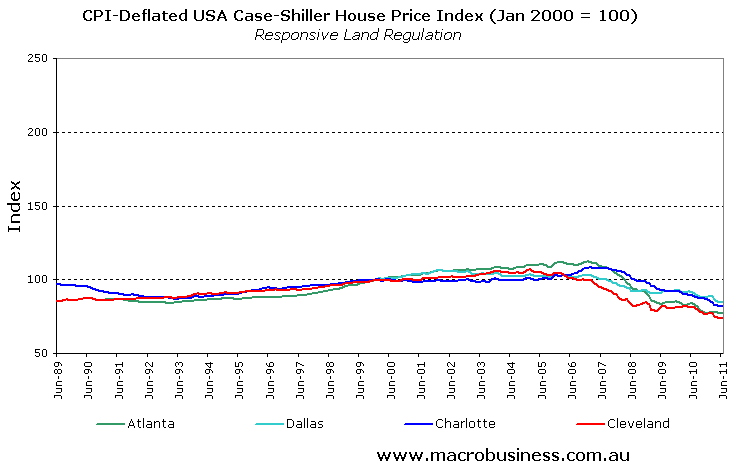
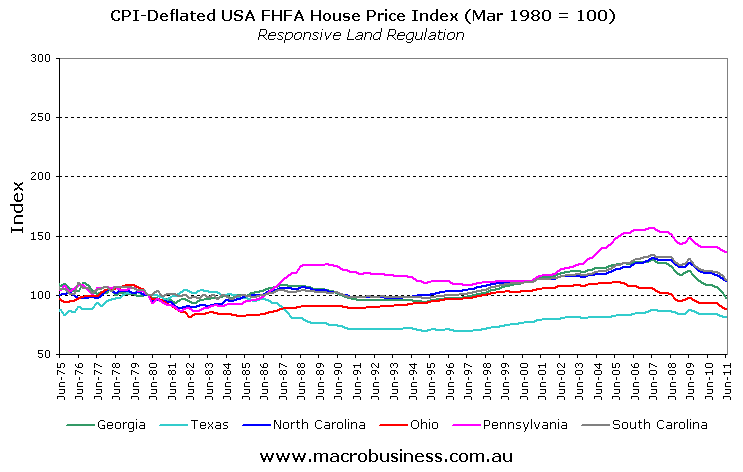
The US experience clearly demonstrates how destructive housing bubbles can be. This is why longer-term structural reforms, in particular freeing-up the supply-side, in addition to tighter controls on credit and more efficient taxation arrangements (e.g. abolishing pro-cyclical tax breaks like negative gearing and implementing a broad-based land tax) are critical in preventing bubbles from developing in the first place.
Prevention is always better than a cure…

